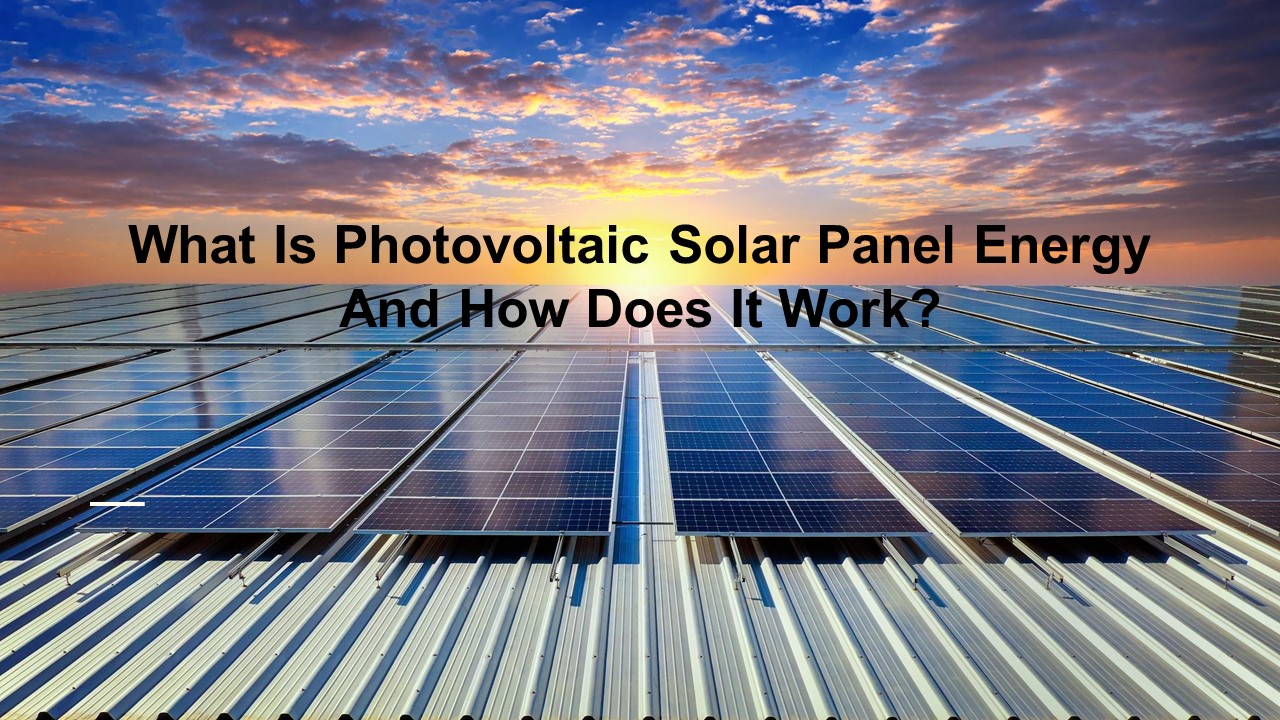What Is Photovoltaic Solar Panel Energy And How Does It Work? - PowerPoint PPT Presentation
Title:
What Is Photovoltaic Solar Panel Energy And How Does It Work?
Description:
Photovoltaic energy is referred to as PV. Using photovoltaic technology, solar energy converts sunlight directly into electricity. A solar panel is made up of many photoelectric cells, each of which has a face that receives sunlight. When sunlight hits one of these faces, it creates an electric voltage difference between the two faces, which causes electrons to move from one to the other and produce an electric current. For more information visit: – PowerPoint PPT presentation
Number of Views:11
Title: What Is Photovoltaic Solar Panel Energy And How Does It Work?
1
What Is Photovoltaic Solar Panel Energy And How
Does It Work?
2
What Is photovoltaic solar panels?
- yy
- PV stands for photovoltaic energy. Solar energy
converts sunlight directly into electricity
through the use of photovoltaic technology. - When sunlight strikes one of the faces of a
photoelectric cell (many of which make up a solar
panel), it creates an electric voltage
differential between the two faces, causing
electrons to flow from one to the other,
generating an electric current. - When photovoltaic technology first emerged, it
was used to power satellites. According to APPA
(the Spanish Association of Renewable Energy
Producers), photovoltaic panel development
accelerated in the 1950s and has now become a
viable alternative to the use of fossil fuels.
3
Photovoltaic Solar Panel How Does It Work?
- yy
- Solar PV cells generate electricity by absorbing
sunlight and converting it into electrical
current. A single solar panel contains many
photovoltaic cells, and the current generated by
all of the cells adds up to enough electricity to
power your home. A typical rooftop residential
array panel will have 60 cells linked together.
Larger panels with 72 or more photovoltaic cells
are frequently used in commercial solar
installations. - The photovoltaic effect is a complicated process,
but these three steps are the fundamental way
that solar cells in solar panels convert energy
from the sun into usable electricity. A
photovoltaic cell (PV cell) is made of materials
that can absorb photons from the sun and generate
an electron flow. When electrons are excited by
photons, they produce a flow of electricity known
as direct current.
4
Function of a photovoltaic solar panels?
- yy
- PV cells are essential in the generation of
electricity. A PV cell, on the other hand, cannot
produce enough renewable energy to power an
entire home. While the primary function of a PV
cell is to generate electricity, we must connect
several solar cells to form a functional solar
panel. To produce enough energy for a residential
house, an entire solar panel array must be
installed. - PV panels are used to generate electricity
directly from sunlight. photovoltaic solar panels
are made up of a number of individual cells that
are linked together to produce electricity at the
desired voltage. Photovoltaic panels are
inherently direct current (DC) devices. They must
be used in conjunction with an inverter to
generate AC. - Solar cells are constructed from silicon
semiconductors that can absorb sunlight and
convert it to electricity. They are arranged in a
large frame that serves as the solar panel.
5
CONCLUSION
- The majority of the Earth's surface receives
enough solar energy to allow for low-grade
heating of water and buildings, though this
varies greatly depending on latitude and season.
Simple mirror devices at low latitudes can
concentrate solar energy sufficiently for cooking
and even driving steam turbines. - In some semiconducting materials, the energy of
light causes electrons to shift. This
photovoltaic effect has the potential to generate
large amounts of electricity. However, due to the
current low efficiency of solar PV cells, very
large areas are required to supply electricity
demands. - Direct solar energy use is the only renewable
energy source capable of eventually replacing
current global energy supply from non-renewable
sources, but at the cost of at least 500,000 km2
of land area.































